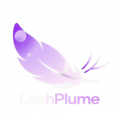.jpg)
False Eyelashes Material Science 2025: PTFE Fiber vs. Mink Alternatives
In 2025, the world of false eyelashes is more advanced—and more ethically aware—than ever. As demand for cruelty-free, long-lasting, and performance-driven lash products continues to rise, material science has stepped into the spotlight. At the heart of this innovation is a debate between two of the industry’s most talked-about materials: PTFE fiber and mink alternatives. These cutting-edge options offer distinct benefits, and understanding their differences is essential for both beauty professionals and conscious consumers alike.
The Rise of High-Performance Lash Materials
False eyelashes have evolved far beyond simple synthetic strips. Today’s lash materials must meet increasingly complex requirements: lightweight feel, natural appearance, durability, ethical sourcing, and sustainability. With consumers becoming more informed and selective, brands are investing in new technologies and fibers that can mimic the softness of mink without compromising on ethics or performance.
PTFE fiber (polytetrafluoroethylene), a newcomer to the lash industry, is gaining traction for its advanced technical qualities, while refined mink alternatives continue to dominate the cruelty-free space. But how do these two contenders compare?
What Is PTFE Fiber and Why Is It Used in False Lashes?
PTFE, most commonly recognized under the trade name Teflon™, is a synthetic fluoropolymer known for its slick, non-stick surface and resistance to heat and chemicals. In 2025, PTFE has found a surprising new application in the world of beauty: as a high-performance fiber in premium false lashes.
Engineered PTFE lash fibers are incredibly fine, smooth, and uniform—offering an ultra-lightweight feel and exceptional durability. Because of its molecular structure, PTFE fiber repels moisture, oil, and dirt, making it particularly useful for extended-wear lashes or all-day glam looks in humid environments.
Moreover, PTFE lashes maintain their curl even under heat or moisture, offering long-term wear with minimal touch-ups. While traditionally used in aerospace and medical fields, its migration to beauty speaks volumes about the fusion of science and style.
Mink Alternatives: Cruelty-Free and Evolving
In contrast, mink alternatives remain the go-to for users seeking soft, fluttery lashes without animal cruelty. Made from synthetic silk, faux mink, or biodegradable plant-based fibers, these lashes are specifically designed to replicate the appearance and texture of real mink fur—without the ethical baggage.
Faux mink lashes are typically lighter and finer than traditional synthetic lashes and come in various finishes from matte to semi-gloss. By 2025, improvements in fiber technology have made these alternatives nearly indistinguishable from real mink, both in appearance and tactile sensation. Many of these products are also biodegradable, aligning with the broader sustainability movement in the beauty industry.
Head-to-Head: PTFE Fiber vs. Mink Alternatives
| Feature |
PTFE Fiber |
Mink Alternatives |
| Softness |
Ultra-smooth, but slightly firmer |
Extremely soft and natural-feeling |
| Durability |
Very high—resistant to heat, water, and oil |
Good—suitable for daily or occasional wear |
| Weight |
Featherlight |
Featherlight |
| Ethical Sourcing |
Synthetic, cruelty-free |
Cruelty-free and often vegan |
| Sustainability |
Low biodegradability |
High (plant-based variants) |
| Cost |
Premium |
Wide range—budget to luxury |
Applications and Use Cases
PTFE Fiber Lashes: Ideal for professional settings, bridal wear, stage performances, and long events where lashes must hold up under intense conditions. They’re perfect for lash extension artists who need a durable, precision-cut material that retains shape for weeks.
Mink Alternatives: Versatile and accessible, these lashes are great for everyday glam, sensitive eyes, or users committed to ethical beauty. The wide range of styles and price points makes them suitable for both first-time users and seasoned lash lovers.
Consumer Considerations in 2025
With so many options on the market, consumers are no longer satisfied with “good enough.” They want lashes that align with their values, suit their lifestyle, and deliver high performance. Here are a few factors to keep in mind when choosing between PTFE and mink alternatives:
- Sensitivity: PTFE fiber is hypoallergenic, making it suitable for those with reactive skin or allergies.
- Environmental Impact: Biodegradable faux mink lashes are better suited for eco-conscious buyers.
- Price Sensitivity: PTFE lashes tend to be on the higher end, whereas mink alternatives are available in budget-friendly options.
- Longevity Needs: For extended wear and harsh conditions, PTFE has the edge. For one-time use or occasional glam, faux mink is more than enough.
Conclusion: Science Meets Style
The evolution of false eyelash materials in 2025 reflects the beauty industry’s broader move toward performance, personalization, and responsibility. Whether you’re drawn to the high-tech durability of PTFE fiber or the soft, sustainable charm of mink alternatives, there’s a perfect lash material for every user and occasion.
As material science continues to innovate, the line between beauty and technology grows ever finer—just like the lashes we wear. In this new era, the future of falsies is not only beautiful but also intelligent and intentional.



.jpg)
